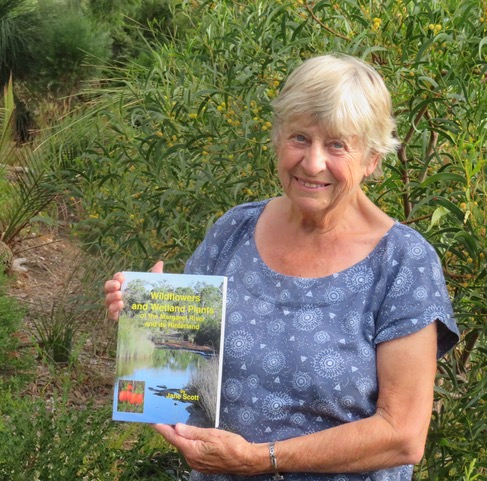The Margaret River is one of the healthiest in the south-west, and although it is only around 60 km in length it flows through a diverse range of habitats and geological formations, with equally varied vegetation types. The Capes area lies at the meeting points of several vegetation systems, the major ones being the Swan Coastal Plain, the Darling Range, and the Southern karri forests and wetlands, not to mention the very special Whicher Range. Altogether this makes for a fascinating mix of plants.

Our ‘Wildflowers and Wetlands Plants’ book illustrates the diversity that occurs from the sea to the source of the river, and especially highlights some of the wetland plants that do not receive so much attention in other, more general wildflower books.Jane Scott graduated from University College, London with a Geography degree, and has qualifications in teaching and librarianship, but has always had a passion for wildflowers, both while growing up in the UK, and then after settling in WA in the early 1970s. She has never worked professionally as a botanist, but said she has been very lucky in having many friends and colleagues whose expertise she has been able to tap into, along with learning much from every book that became available (not so many in the 70s & 80s!)
Jane said “I have lived in the Margaret River area for 50 years with my family, working part-time at our Visitor Centre, which left me time to pursue my dual loves of wildflowers and walking – I have been very involved with the Cape to Cape Walktrack since its inception in the 1990s. In 2000-02, I collected for the WA Herbarium’s Regional Herbarium Project, again learning heaps from the Herbarium professionals, especially from Mike Hislop, who oversaw the plant identifications for that project.
At the same time, with fortuitous close friendships with Ray Forma, who had expertisein publishing, and artist, Patricia Negus, we started writing some books, initially the Guidebook for the C2C Track, and a book of circular walks in the Capes region, followed by others on the area’s wildflowers, plus one on fungi, which was Patricia’s particular love. ‘Wildflowers and Wetland Plants’ was our most recent publication, and I am indebted to DBCA botanist, Andrew Webb, for his considerable help with this one. Very sadly, we lost Ray to leukaemia 3 years ago, but our books are still popular and selling well.”
Jane will have some of the ‘Wildflowers and Wetland Plants’ books for purchase at $20.
